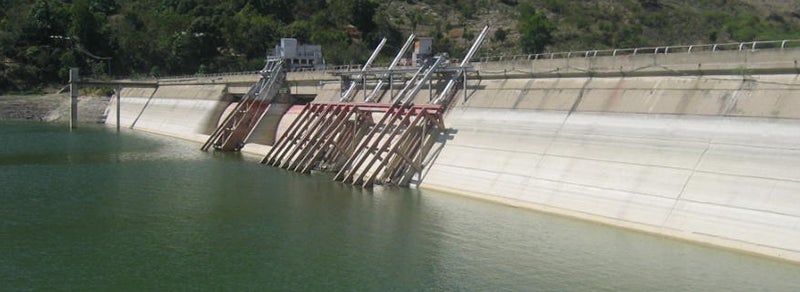Latin America needs more hydropower. Is there a way to get them right?
At the IDB, we are always searching for lessons learned that can help us do better and more sustainable projects. The 456MW Chaglla Hydroelectric Project on the Huallaga River in Huánuco, Perú – of the Empresa de Generación Huallaga, a subsidiary of the Odebrecht Group – provides a number of lessons learned for hydropower development in South America.
The overall footprint of the dam (the flooded area and the length of river affected) is relatively small compared to other projects with similar energy production. The reservoir has a rapid turnover time, which helps maintain water quality downstream and limits greenhouse gas emissions.
In just the first six months of operation, the dam should compensate for all construction related carbon emissions.
The project’s location avoids some of the specific environmental and social impacts characteristic of hydroelectric projects. Some local livelihoods will be affected, for which the project is compensating, but no one lives in the immediate area of the project site. The only resettlement necessary was moving a few families’ homes by meters to make way for the access road. The project is high enough in the Andes to not affect long distance migratory fish species. The reservoir is also far from the nearest protected area. The project has created a new access road into the area, but this is unlikely to markedly change land use. Neighboring communities are highly supportive of the road – it improves access to health and education and opens opportunities for local commerce. Before the road was built, there was no reliable public transport to the nearest town, and it took six hours to get there from the project site; today, it takes just one hour, and two local transport companies have emerged to provide transportation services.
Although the dam has reduced negative impacts and clearly produces many positive benefits, there is no getting around the fact that it negatively affects the Huallaga River. The project will turn a section of the free flowing river into a 17 km long lake above the dam and reduce water flows in 15.5 km of river between the dam and the powerhouse. These kinds of changes are common to almost all hydropower projects and represent a significant impact on habitats that support aquatic communities. The project’s location and the unavoidable nature of these impacts pose an additional challenge; the fast flowing and highly turbulent rivers of the Andes Piedmont are home to very special fish. In the baseline studies for the project, new species of torrent catfish (Astroblepus) and rubber nose catfish (Chaetostoma) were found. Almost nothing is known about these kinds of fish – though they have subsequently been found to live beyond the boundaries of the project. Accordingly, the project has devised an interesting, and innovative, approach to mitigating impacts on the habitats of these fish.
The approach includes:
[dropcap type=”circle” color=”#ffffff” background=”#ff9900″]1[/dropcap] ecological studies of the fish community and new species;
[dropcap type=”circle” color=”#ffffff” background=”#ff9900″]2[/dropcap] use of this information to design downstream flows to ensure tributaries will remain ecologically connected;
[dropcap type=”circle” color=”#ffffff” background=”#ff9900″]3[/dropcap] protection of tributaries to ensure their long term conservation; and,
[dropcap type=”circle” color=”#ffffff” background=”#ff9900″]4[/dropcap] conservation of a tributary outside the project area as an aquatic offset to compensate for residual impacts in the Huallaga River. The aquatic offset and protected tributaries will make sure that the fish species, and the aquatic habitats they depend on, are conserved over the long term.
In the past, hydroelectric projects rarely took into full account their impacts on aquatic habitats either in the reservoir or downstream of the dam. In this project, there is an effort to minimize habitat loss by maintaining connectivity among downstream areas and to compensate for residual impacts on aquatic habitats through an offset. Chaglla and Reventazón Hydroelectric Project (in Costa Rica) are the first two Bank supported projects that will use aquatic offset approaches. As such, we are delighted that these projects are providing lessons learned to support more sustainable hydroelectric projects throughout Latin America.
Links:
Learn more about Chaglla, Peru
This Project will also be featured in the forthcoming IDB Sustainability Report
[button color=”#ffffff” background=”#ff9900″ size=”medium” src=”https://blogs.iadb.org/cambioclimatico/2015/01/09/existe-tal-cosa-como-la-presa-hidroelectrica-perfecta/”]Haz clic para español[/button]
titulo: Big hydroelectric projects are rife with risks. Though cleaner than carbon-based energy sources, they have potential negative impacts on the environment and people. Opponents are often passionate in their objections, taking to the street to demonstrate against them.


Hydroelectric plants are going to be innecesary and obsolete gien their costs,and negative effects ecological effects! In some countries like Holland they are harnessing the power of the sea currents,waves,buildin sea(powered dams)that raisedd the level of the sea waves,and unfortunately events seem to indicate that in the future nuclear energy will be safe enough, to use even in small scale!!.Gnereal Eletric, and other industrial conglomerates are already experimenting with small scale nuclear reactor!!The key is how to avoid catastrophies like Fukujima,Chernobyl,the so called China syndrome!!terrorism,? if nuclear reactors can powered huge submarines can they power a city???